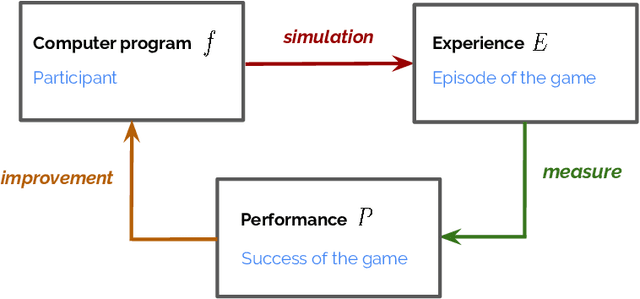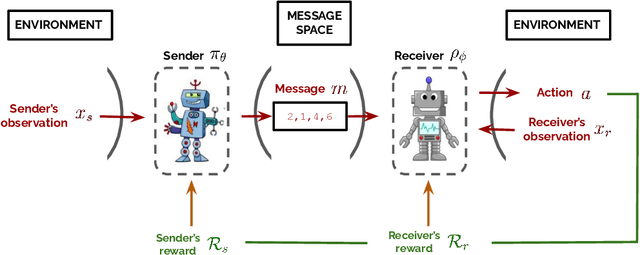Mathieu Rita
Jack
The Llama 3 Herd of Models
Jul 31, 2024Abstract:Modern artificial intelligence (AI) systems are powered by foundation models. This paper presents a new set of foundation models, called Llama 3. It is a herd of language models that natively support multilinguality, coding, reasoning, and tool usage. Our largest model is a dense Transformer with 405B parameters and a context window of up to 128K tokens. This paper presents an extensive empirical evaluation of Llama 3. We find that Llama 3 delivers comparable quality to leading language models such as GPT-4 on a plethora of tasks. We publicly release Llama 3, including pre-trained and post-trained versions of the 405B parameter language model and our Llama Guard 3 model for input and output safety. The paper also presents the results of experiments in which we integrate image, video, and speech capabilities into Llama 3 via a compositional approach. We observe this approach performs competitively with the state-of-the-art on image, video, and speech recognition tasks. The resulting models are not yet being broadly released as they are still under development.
Countering Reward Over-optimization in LLM with Demonstration-Guided Reinforcement Learning
Apr 30, 2024



Abstract:While Reinforcement Learning (RL) has been proven essential for tuning large language models (LLMs), it can lead to reward over-optimization (ROO). Existing approaches address ROO by adding KL regularization, requiring computationally expensive hyperparameter tuning. Additionally, KL regularization focuses solely on regularizing the language policy, neglecting a potential source of regularization: the reward function itself. Inspired by demonstration-guided RL, we here introduce the Reward Calibration from Demonstration (RCfD), which leverages human demonstrations and a reward model to recalibrate the reward objective. Formally, given a prompt, the RCfD objective minimizes the distance between the demonstrations' and LLM's rewards rather than directly maximizing the reward function. This objective shift avoids incentivizing the LLM to exploit the reward model and promotes more natural and diverse language generation. We show the effectiveness of RCfD on three language tasks, which achieves comparable performance to carefully tuned baselines while mitigating ROO.
Language Evolution with Deep Learning
Mar 18, 2024



Abstract:Computational modeling plays an essential role in the study of language emergence. It aims to simulate the conditions and learning processes that could trigger the emergence of a structured language within a simulated controlled environment. Several methods have been used to investigate the origin of our language, including agent-based systems, Bayesian agents, genetic algorithms, and rule-based systems. This chapter explores another class of computational models that have recently revolutionized the field of machine learning: deep learning models. The chapter introduces the basic concepts of deep and reinforcement learning methods and summarizes their helpfulness for simulating language emergence. It also discusses the key findings, limitations, and recent attempts to build realistic simulations. This chapter targets linguists and cognitive scientists seeking an introduction to deep learning as a tool to investigate language evolution.
On the Correspondence between Compositionality and Imitation in Emergent Neural Communication
May 22, 2023Abstract:Compositionality is a hallmark of human language that not only enables linguistic generalization, but also potentially facilitates acquisition. When simulating language emergence with neural networks, compositionality has been shown to improve communication performance; however, its impact on imitation learning has yet to be investigated. Our work explores the link between compositionality and imitation in a Lewis game played by deep neural agents. Our contributions are twofold: first, we show that the learning algorithm used to imitate is crucial: supervised learning tends to produce more average languages, while reinforcement learning introduces a selection pressure toward more compositional languages. Second, our study reveals that compositional languages are easier to imitate, which may induce the pressure toward compositional languages in RL imitation settings.
Emergent Communication: Generalization and Overfitting in Lewis Games
Sep 30, 2022



Abstract:Lewis signaling games are a class of simple communication games for simulating the emergence of language. In these games, two agents must agree on a communication protocol in order to solve a cooperative task. Previous work has shown that agents trained to play this game with reinforcement learning tend to develop languages that display undesirable properties from a linguistic point of view (lack of generalization, lack of compositionality, etc). In this paper, we aim to provide better understanding of this phenomenon by analytically studying the learning problem in Lewis games. As a core contribution, we demonstrate that the standard objective in Lewis games can be decomposed in two components: a co-adaptation loss and an information loss. This decomposition enables us to surface two potential sources of overfitting, which we show may undermine the emergence of a structured communication protocol. In particular, when we control for overfitting on the co-adaptation loss, we recover desired properties in the emergent languages: they are more compositional and generalize better.
"LazImpa": Lazy and Impatient neural agents learn to communicate efficiently
Oct 05, 2020



Abstract:Previous work has shown that artificial neural agents naturally develop surprisingly non-efficient codes. This is illustrated by the fact that in a referential game involving a speaker and a listener neural networks optimizing accurate transmission over a discrete channel, the emergent messages fail to achieve an optimal length. Furthermore, frequent messages tend to be longer than infrequent ones, a pattern contrary to the Zipf Law of Abbreviation (ZLA) observed in all natural languages. Here, we show that near-optimal and ZLA-compatible messages can emerge, but only if both the speaker and the listener are modified. We hence introduce a new communication system, "LazImpa", where the speaker is made increasingly lazy, i.e. avoids long messages, and the listener impatient, i.e.,~seeks to guess the intended content as soon as possible.
 Add to Chrome
Add to Chrome Add to Firefox
Add to Firefox Add to Edge
Add to Edge